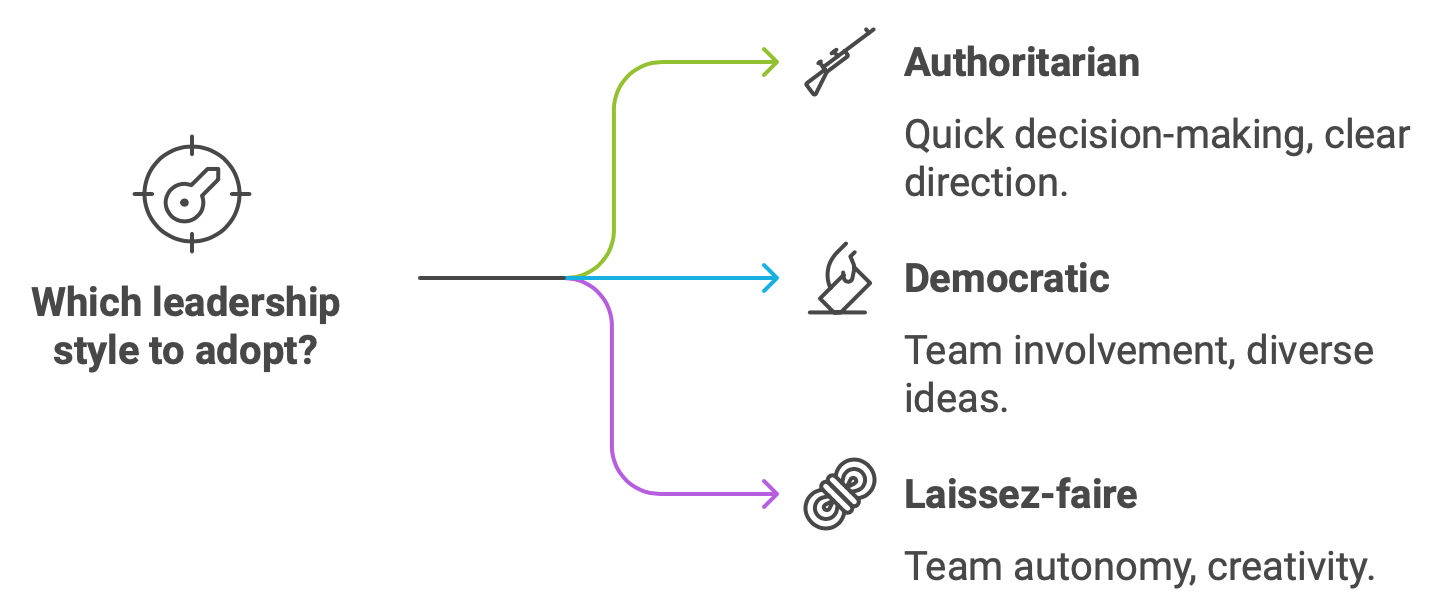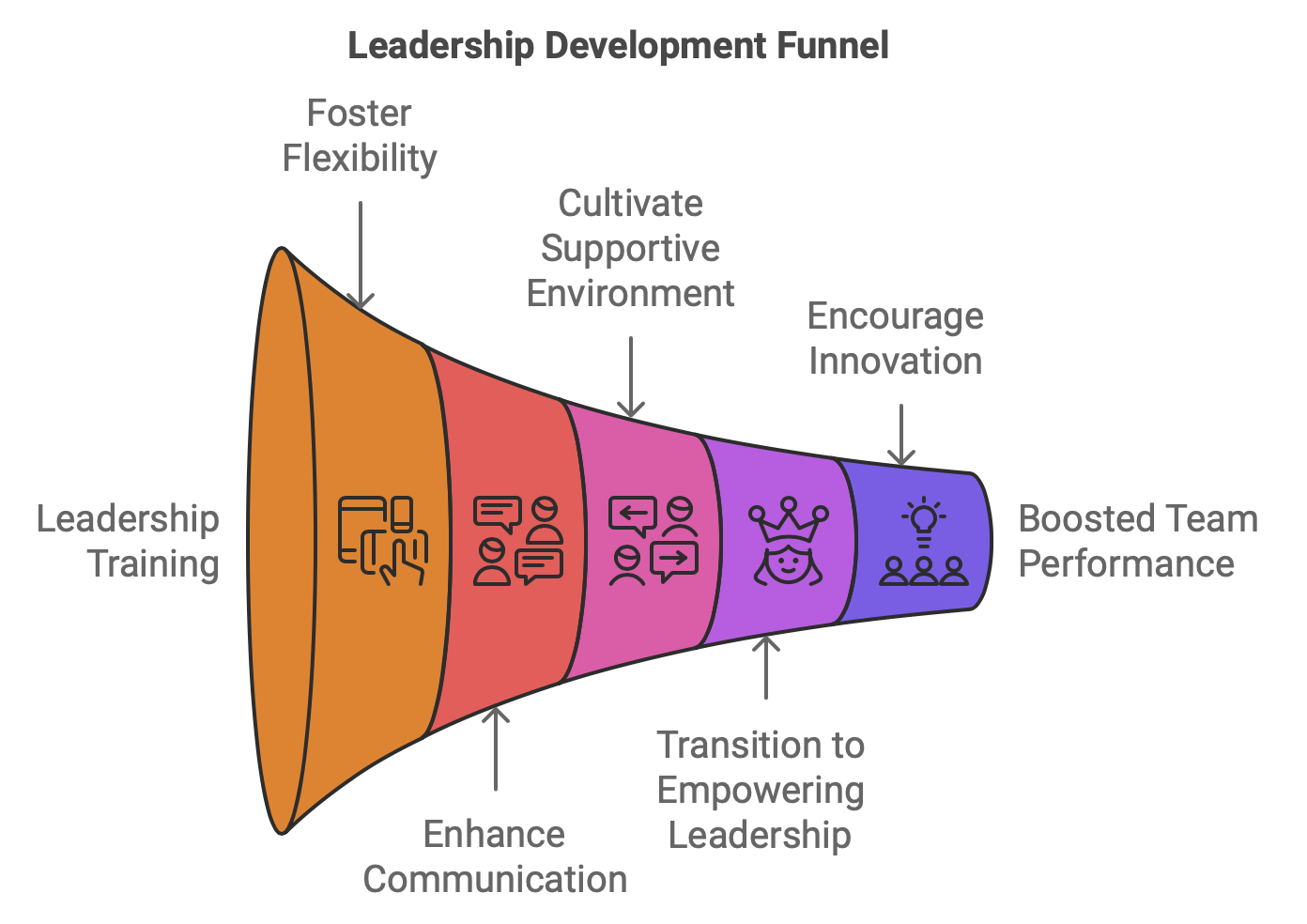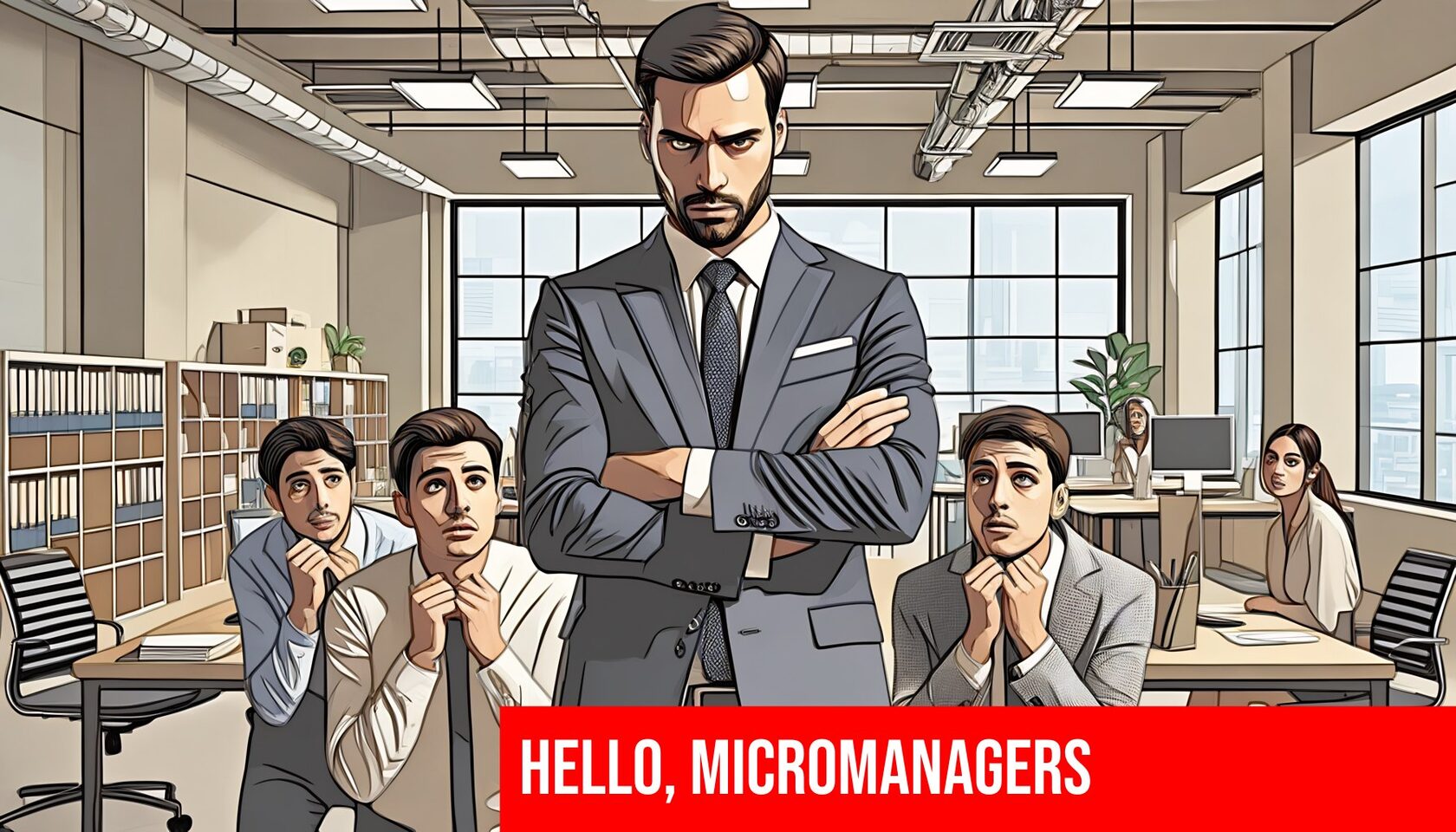The Death of Micromanagement: How to Inspire Your Team and Achieve Results Without Shifting Responsibility
Hello! I’m Olga Fedoseeva, CEO of Fractional and Interim HR Service at UnitiQ.com, and today I want to talk about how micromanagement is becoming obsolete and what we can do instead to build thriving teams that achieve outstanding results.
The Death of Micromanagement: Revitalizing Teams for Lasting Success
Through years of experience, I’ve come to a clear realization: no lasting success can be achieved without an established process. Just like with fitness—if we want a toned, healthy body, we need to work out regularly—strategic projects require thoughtful planning, execution, and environment. Yet, this fundamental point often gets overlooked in discussions. We hear a lot about team dynamics or how to improve relationships within teams, but the focus on processes—the very heartbeat of project success—is often missed.
Take any goal, like creating a branding book or launching a marketing campaign. The outcome might be the same, but the approaches we take can lead to wildly different results. So, what are the two main pathways that get us to our destination?
Take any goal, like creating a branding book or launching a marketing campaign. The outcome might be the same, but the approaches we take can lead to wildly different results. So, what are the two main pathways that get us to our destination?
Chaos or Order: Two Paths, One Result

The first route is filled with stress, harsh control, fear, and uncertainty. The leader in this scenario fails to consider the team’s emotional state or provide clear guidance. This often results in conflict, errors, and burnout. You might hear phrases like, "I don’t care how you do it, just get it done," which I find completely misguided. As a leader and business owner, I firmly believe that’s a recipe for disaster. It translates to, "I’m not going to help or guide you, but I’ll demand a flawless outcome at the end." It’s nothing more than passing the buck, and it damages the team’s morale.
The second route, however, is about working in an environment that fosters creativity, safety, and growth. It’s a space where people feel encouraged and supported, where they can shine as experts and curious individuals eager to explore new ideas. It’s similar to the friendly, relaxed vibe in the show *Friends*, where the characters feel free to be themselves. In this kind of environment, we not only get better results but also enjoy the process along the way. This is the type of space I strive to create for my team and clients.
The second route, however, is about working in an environment that fosters creativity, safety, and growth. It’s a space where people feel encouraged and supported, where they can shine as experts and curious individuals eager to explore new ideas. It’s similar to the friendly, relaxed vibe in the show *Friends*, where the characters feel free to be themselves. In this kind of environment, we not only get better results but also enjoy the process along the way. This is the type of space I strive to create for my team and clients.
Which Path Leads to Quality and Satisfaction?

From experience, I know that the second path—building a safe, supportive environment—leads to far greater team effectiveness, creativity, and higher-quality outcomes. But creating such an environment isn’t always easy.
It’s the leader’s job to cultivate this atmosphere. Leadership is more than just a set of traits; it’s a toolkit for building effective relationships within a team. To navigate this, we can look at three broad styles of leadership:
Each style can play a critical role in team success, but contrary to popular belief, you don’t need to stick to one. Instead, the key to leadership lies in adapting these styles according to the project’s phase and team dynamics. What Makes Managers Invaluable Assets in Organizations?
It’s the leader’s job to cultivate this atmosphere. Leadership is more than just a set of traits; it’s a toolkit for building effective relationships within a team. To navigate this, we can look at three broad styles of leadership:
- Authoritarian Leadership – The leader makes decisions independently and expects the team to follow.
- Democratic Leadership – The leader listens to the team’s ideas and involves them in decision-making.
- Laissez-faire Leadership – The leader steps back, giving the team full autonomy to do their work.
Each style can play a critical role in team success, but contrary to popular belief, you don’t need to stick to one. Instead, the key to leadership lies in adapting these styles according to the project’s phase and team dynamics. What Makes Managers Invaluable Assets in Organizations?
Authoritarian Leadership: Reducing Anxiety in Uncertain Times
New leaders often feel pressure to choose between extreme authoritarian control—micromanaging every detail—or being overly friendly and democratic. But both extremes are damaging. Effective leadership involves striking a balance based on what the team needs at the time.
When a project is just starting, and the team lacks experience or clarity, an authoritarian approach can reduce anxiety. By assuming responsibility, the leader reassures the team that they are in a safe space. This allows the team to focus on their work without being overwhelmed by uncertainty.
When a project is just starting, and the team lacks experience or clarity, an authoritarian approach can reduce anxiety. By assuming responsibility, the leader reassures the team that they are in a safe space. This allows the team to focus on their work without being overwhelmed by uncertainty.

Shifting to Democratic Leadership: Encouraging Initiative
As the project moves forward and the team becomes more confident and cohesive, the leader can gradually transition to a more democratic approach. This means delegating more responsibility, giving the team autonomy, and encouraging creativity.
At this stage, the leader acts more like a mentor, stepping back while still providing guidance when necessary. The team is given room to explore new ideas, experiment, and grow, leading to innovative solutions and increased ownership over the work.
At this stage, the leader acts more like a mentor, stepping back while still providing guidance when necessary. The team is given room to explore new ideas, experiment, and grow, leading to innovative solutions and increased ownership over the work.
Laissez-faire Leadership: Trusting a Capable Team
When a team reaches full autonomy and can handle most tasks independently, the leader can take a laissez-faire approach. In this scenario, the leader acts as a consultant or advisor, offering help only when needed. The team is trusted to make decisions and drive the project forward. The key here is to continue providing support when necessary but also to trust the team’s expertise and instincts.
The Importance of Flexibility in Leadership
Adapting leadership styles isn’t just a one-size-fits-all approach. Instead, it’s about knowing when to shift from one style to another based on the project’s needs and the team’s development. Being flexible in your leadership approach is essential to navigating uncertainty and fostering a healthy, productive work environment.
Here are additional principles that contribute to building a supportive work culture, which we embrace at UnitiQ:
Here are additional principles that contribute to building a supportive work culture, which we embrace at UnitiQ:
- Trust and Safety – A foundational aspect of any team. People need to feel safe to voice ideas, ask questions, and make mistakes. Constructive feedback should focus on growth, not blame.
- Support and Encouragement – Recognize achievements, but also help the team through challenges. Support can be both financial and non-financial, like public acknowledgment or providing opportunities for learning. Autonomy at work is a distant dream.
- Task Focus – Rather than dwelling on mistakes, the focus should be on solving problems and achieving goals. Clear task setting, responsibility distribution, and regular check-ins help the team stay on track.
- Curiosity and Openness – Encourage the team to explore new methods, experiment, and push boundaries. This helps foster creativity and adaptability, key traits in an ever-changing market.
Conclusion: Invest in Your Team's Environment, Reap the Rewards
Building a comfortable and supportive work environment is the cornerstone of project success. Choose the right leadership style, adapt to the project phase, focus on tasks, encourage creativity, and invest in your team’s growth. And don’t forget, work should be enjoyable. By creating a positive atmosphere, you’ll cultivate a “dream team” that not only meets but exceeds expectations.
The essence of successful leadership lies in adaptability. It's not about clinging to one management style or principle but understanding the nuances of your team and the project's stage. Micromanagement, with its rigid oversight, often stifles creativity and growth, while the right balance of structure, trust, and freedom can unlock the full potential of your team. Leadership is a fluid process, and knowing when to apply the right approach is critical to achieving sustainable results. Ultimately, when leaders invest in their team’s environment and well-being, they set the foundation for long-term success.
The essence of successful leadership lies in adaptability. It's not about clinging to one management style or principle but understanding the nuances of your team and the project's stage. Micromanagement, with its rigid oversight, often stifles creativity and growth, while the right balance of structure, trust, and freedom can unlock the full potential of your team. Leadership is a fluid process, and knowing when to apply the right approach is critical to achieving sustainable results. Ultimately, when leaders invest in their team’s environment and well-being, they set the foundation for long-term success.
I also recommend you to read:
The Future of Leadership: Creating Communities Over Command
From MrBeast to Your Business: Lessons in Leadership and How UnitiQ Can Help
Mastering Delegation: 5 Rules to Empower Your Team and Avoid Common Mistakes
Rethinking Leadership: Results, not Office Hours, Drive Success
The Future of Leadership: Creating Communities Over Command
From MrBeast to Your Business: Lessons in Leadership and How UnitiQ Can Help
Mastering Delegation: 5 Rules to Empower Your Team and Avoid Common Mistakes
Rethinking Leadership: Results, not Office Hours, Drive Success
Develop Adaptive Leadership Skills with UnitiQ

At UnitiQ, we specialize in developing adaptive leadership skills that empower teams and drive success. Our tailored leadership programs focus on fostering flexibility, enhancing communication, and cultivating a supportive work environment. Through hands-on coaching and expert guidance, we help leaders at all levels transition from micromanagement to empowering leadership, encouraging innovation, and boosting overall team performance. Whether you're a new manager or an experienced executive, UnitiQ offers the tools and strategies needed to inspire your team and achieve sustainable results.
Contact me directly:
My Telegram and LinkedIn Profiles.
Contact me directly:
My Telegram and LinkedIn Profiles.
